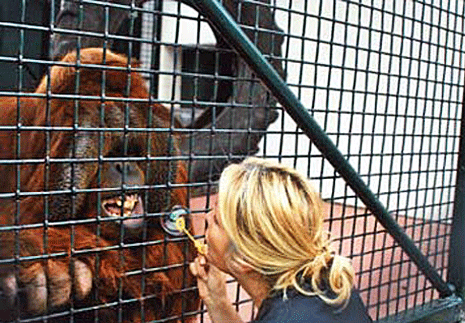
By Patricia Caso/May 29, 2013
Photos Courtesy of LEO Zoological Conservation Center
On March 22, 2013 Marcella Leone and her LEO Zoological Conservation Center were thrust into the national limelight when a rare and unbelievably adorable female Rothschild giraffe was born. A month before that, a member of a critically endangered species, an Eastern Mountain bongo, gave birth at the same center.
“Our mantra at LEO is Learn, Care, Act. If we can get people to learn about these animals, learn about their plight and how they fit into the balance of nature, people are able to care. Then we hope care will cross into act…” Marcella Leone
Marcella currently oversees 48 species of wild animals, many endangered, that cruise, fly, walk, waddle and run through the many acres of the LEO Zoological Conservation Center in Greenwich, Connecticut. But, this center is not a typical zoo.
I was curious to learn more about Marcella, LEO’s Founder and Director, and her motivation to establish such a unique facility. Because of her passion, Marcella is taking one giant step in saving a precious part of our planet…
EYE: I have to start with your celebrity giraffe. How is she?

MARCELLA: Sandy Hope, named in honor of Newtown’s children, was born six feet tall and has been growing about an inch a day. She is quite a lot larger now. In a little over two months, she’s almost eight feet tall, and doing really well. We had another rare Rothschild giraffe from the Bronx Zoo come in about a month ago.
It’s now out of quarantine, so those two will be interacting. We are expecting two more baby giraffes. The kids from Newtown will be our special guests this summer as well.
EYE: Since I’ve never heard of buying a wild animal like a giraffe, how do you get such creatures for LEO?
MARCELLA: Have you tried giraffes.com? Ha! We are an accredited zoological facility. Within that community of conservation centers and zoos, animals are loaned and exchanged. I’m fairly certain you couldn’t go out and buy a giraffe.
EYE: What exactly does LEO stand for and what does the Center propose to do?
MARCELLA: LEO stands for Lionshare Educational Organization. We have no lions here but we do have 48 different species that we breed and some get loaned to zoos. Many are endangered and there is a real need for education. Our mantra at LEO is Learn, Care, Act.
If people learn about these animals, about their plight and how they fit into the balance of nature, people are able to care. Then we hope care will cross into act and we will all do something to preserve these fabulous creatures and their environments.
“Not many people get to go to Africa or Asia and observe these animals. When people see them, learn about them and understand them, then they will care…”
EYE: LEO Conservation Center seems very different from a typical zoo. What makes LEO unique?
MARCELLA: LEO is not open to the public like a typical zoo. It’s not that we don’t want people to see the animals but we are trying to make sure that people can see them. Some species of animals are not breeding well in public zoos due to the high volume of crowds, stress and other factors.
Yet, I feel that zoos are very important. Not many people get to go to Africa or Asia and observe these animals. When people see them, learn about them and understand them, then they will care and want to protect not only the animals but also the places where they are from. (You can see the baby Rothschild in the special video below.)
EYE: Was starting an animal conservation center a goal for you from a young age?
MARCELLA: LEO is not something I’d been planning to do my whole life. It’s something that evolved. Some people are just born animal people. I am certainly one of those people, collecting worms and frogs and bugs and saving stray cats. I wanted to be a vet. but even though I was a good student, I didn’t get into the schools I wanted.
So, I made an alternative choice that was not very popular with my family. I took off and followed a rock band for a year and a half and ultimately came home with my tail between my legs. I went to night school and got a minimum wage, boring job working in the family business. I didn’t even finish college. I ended up starting a job on the side on my own and made some real estate investments. I finally sold that business and found my way back to animals.
EYE: How were you able to accomplish this?
MARCELLA: I basically educated myself through many courses, immersed myself in practical experience like working in native life rehabilitation and conservation programs.
I got my first animal in a conservation visit to a place I’d been contributing to in Africa, and it went on from there. Part of LEO’s mission is to offer some of that practical experience to students who are doing it the traditional way to augment their academic studies. (Below see Marcella on NEWS 12 CT’s Pet Talk with the LEO Center’s two baby gibbons.)
EYE: I understand your husband gave you a zebra, which he says got you going to start the Center?
MARCELLA: That’s part of the story. I did get a zebra for Valentine’s day, stemming from a visit to a reintroduction program at a Kenyan animal orphanage. I have been interested in re-population where species are extinct or in trouble for awhile. We were petting the baby zebras. They were so cute.
Of course I said, “I want one. I want one.” I didn’t really want one. But, I got one, Zachary. Zebras are wonderful magical creatures. But when they don’t like you, they bite you. When they love you, they bite you. Basically, zebras bite you. Even when they aren’t biting you they are kicking you at the other end. Zebras are beautiful wild creatures but they are not like a domestic horse. We do breed zebras that come from the same area that Sandy Hope comes from.

EYE: How do giraffes and your other creatures acclimate to snow and the seasons?
MARCELLA: If we cannot do a good job with the species, then we don’t choose that species in our collection plan. To shelter the giraffes, we have two special barns, and I believe we have the only indoor giraffe paddock that I’ve heard of.
It is about 200 feet long. The barn has something like horse stalls, only bigger, attached to an indoor covered paddock that has windows. If you are a giraffe, viewing things are very important in your world. Giraffes are the sentinels of the wild. That’s why the herd animals love to hang out with a giraffe, to be safe. If a lion is coming, then a giraffe will see them first.
We also have simulated trees. We stuff beach balls with quality leafy alfalfa hay. Giraffes are browsers, not grazers, and they eat leafy foods. With our pulley systems, we put all that at different levels, so that the young animals can reach in with their heads in a more natural position. There are heated barns, a winter one and a summer one.
We have a cattle drive in the late fall to move them to the winter barn. These giraffes are so enormous that it’s like modern- day brontosauruses galloping across the fields.
EYE: What is a typical day like for you?
MARCELLA: There is no typical day when animals are involved. Every time you think you have the day laid out, the animals throw a surprise at you. Take our anteater, Armani, that gave birth April 9 to baby Archie and yet her partner had been gone longer than the gestation time. Hmmm.
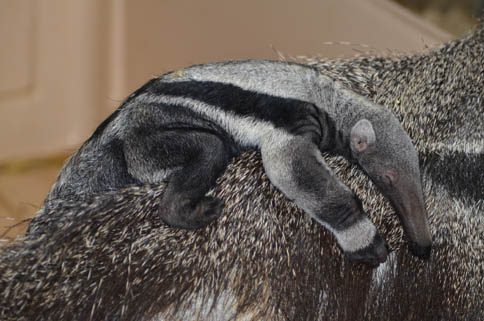
As you can see, a typical day is filled with diversity. I rise at 4-4:30 am, and that’s my quiet time for emails, a cup of coffee and to check in with the Conservation Center. I wish I could say I spend the rest of the day playing with fuzzy animals, but I don’t.
Administrative and development duties take up a lot of time, plus things break every day that need to be fixed! By my favorite time, 6 pm, everyone leaves. All the animals are peaceful, and quiet and I can walk around the grounds myself.
EYE: What are your biggest challenges?
MARCELLA: It’s the amount of time that has to be spent on the administrative because I want to spearhead more of the educational programs.
We are at the point where the Center and its vision are starting to come to fruition and making a difference and impact. The next challenge is to have it be self-sustainingand survive me. Right now, I am the Founder and major contributor.
“Puzzles, the giraffe, is a favorite of many who visit the Center. He has his own Facebook page.”
EYE: You have a zoo school. What is that all about?
MARCELLA: Zoo school is an entire day for 6 to 12-year-old children to participate in a theme for the day, like Party for Primates, Crazy for Carnivores, or Animal Adaptations. For example, kids make enrichment devices for primates and there is nature’s classroom, learning the biology and conservation with the real animals. Then we actually go out into the field.
In the case of the orangutans, kids go into the dome before the animals are there. They put up party streamers and make presents. When the animals are allowed in, the kids see first hand how they react. It drives the lessons home as well as the conservation message. And, there is always an upside to encouraging budding conservationists!
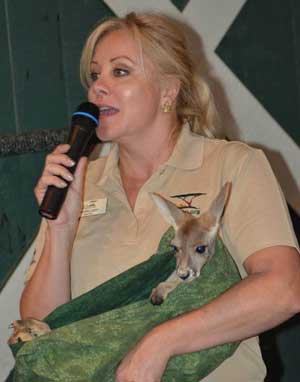
EYE: Do any moments stand out in your work so far?
MARCELLA: There are many wonderful stories ranging from an American fox hound, which, as a surrogate, nursed some fennec fox kits, to a 6-year-old zoo school student who assured me that one day he would take care of this place!
EYE: I read that the orangutans have their own flat screen TVs. Could this be true?
MARCELLA: These orangutans are not wild animals, nor will they be released into the wild. It is a common opinion that they are the most intelligent animals on the planet after humans. They are certainly bright. A challenge is keeping their minds busy in the evenings when they come in.
We don’t let them watch regular TV because they were getting nightmares. You cannot control what is on TV. So I have old DVDs from friends’ kids and they seem to love Veggie Tales, cartoons, songs and Disney shows.
“I do enjoy seeing milestones accomplished, making a difference and starting to make an impact, even if it is small.”
EYE: Which is your favorite creature?
MARCELLA: The one who needs me most! Puzzles,the giraffe, is a favorite of many who visit the Center. He has his own Facebook page. It’s life within LEO from his point of view.
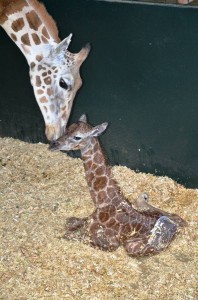 EYE: How far have you come since opening the gates in 2009?
EYE: How far have you come since opening the gates in 2009?
MARCELLA: I don’t think about how far I’ve come. I just clearly have my eye on a ball. I do enjoy seeing milestones accomplished, making a difference and starting to make an impact, even if it is small. Although I love animals, it is so much bigger than that. This idea has to keep going beyond me. LEO is unique, even within the community.
The public is starting to understand there is a need for places like this. Ultimately, I want to step aside as Director and continue to be Founder, hoping to have made a difference in our natural world.
EYE: Certainly, Marcella, you have already made a huge impact in conservation, awareness and action. Thank you for sharing your limited time to let us peek into your world. To learn about this fascinating center, click here and enter its gates. You will enjoy the photographs of its special inhabitants.
###


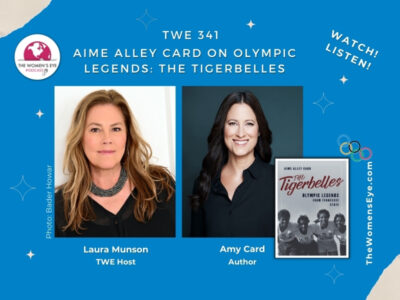

Leave a Reply